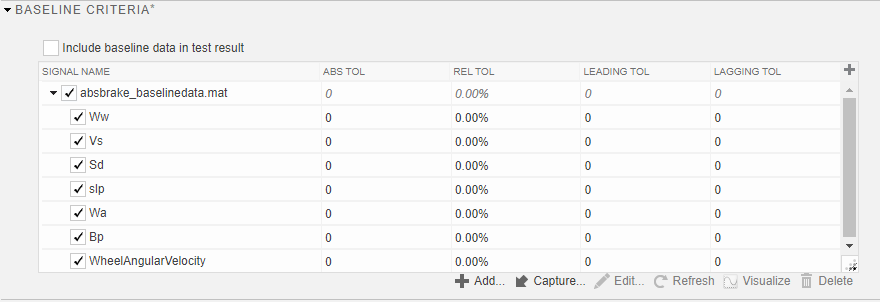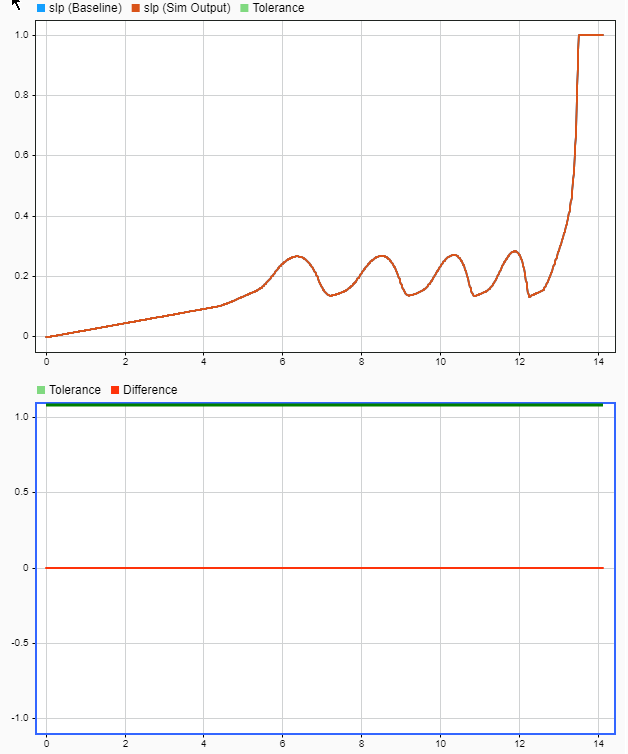编写基线测试用例
在此示例中,您使用 Simulink Test Manager 创建一个测试文件并编写一个测试用例。您可以通过选择在测系统和覆盖率收集设置来指定测试属性。然后,您仿真模型以捕获基线数据并运行测试用例以验证数据并确认信号相同。
您还可以以编程方式创建测试用例或使用模型组件测试向导。有关信息请参阅使用脚本创建并运行测试用例和为模型或组件生成测试和测试框架。
打开模型和测试管理器
1.打开 sldemo_absbrake 模型。
open_system("sldemo_absbrake");2.在 App 选项卡的模型验证、确认和测试部分中,点击 Simulink Test。
3.在测试选项卡的测试用例部分中,点击 Simulink Test Manager。
创建测试文件并指定测试属性
1.在测试管理器中,点击新建 > 测试文件。
2.将文件命名为 baselineTestFile 并保存文件。
3.默认情况下,测试管理器会创建一个包含一个基线测试用例 New Test Case 1 的测试套件。在测试浏览器中,右键点击 New Test Case 1 并选择重命名。将测试用例重命名为 baselineTestCase。

4.将 sldemo_absbrake 模型加载到测试用例中。在在测系统部分,点击使用当前模型按钮 ![]() 。
。

5.要收集测试用例中的覆盖率,必须在测试文件中启用覆盖率收集。在测试浏览器中,选择 baselineTestFile。展开覆盖范围设置部分。选择记录在测系统的覆盖率。测试用例中的覆盖率设置部分将更新为与测试文件中的覆盖率设置一致。有关覆盖率的更多信息,请参阅收集测试覆盖率。
捕获并验证基线数据
1.在测试浏览器中,选择 baselineTestCase。在基线准则部分,点击捕获并在文件字段中指定一个位置。将文件命名为 absbrake_baselinedata 并点击捕获。测试用例仿真模型并捕获选择用于信号记录的信号。基线基准部分显示具有默认容差 0 的记录信号。有关如何在模型中标记要记录的信号的更多信息,请参阅使用信号记录保存信号数据。或者,您可以在测试管理器的仿真输出部分中选择信号。请参阅仿真输出。

2.在测试管理器中,点击运行。在结果和工件窗格中,展开基线准则结果部分,并选择 slp 信号。上图显示仿真输出数据和基线数据,下图显示仿真输出数据和基线数据之间的容差和差异。检查信号以确认仿真输出和基线数据之间的差异为零,如预期的那样。
